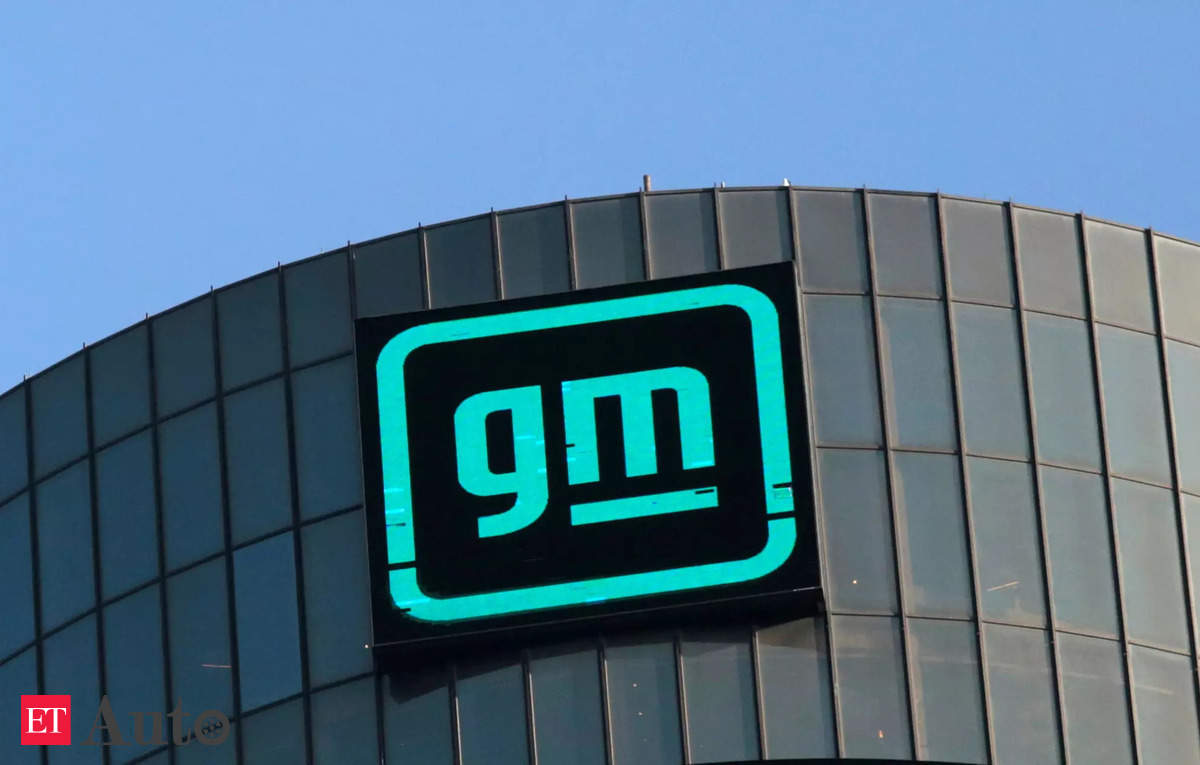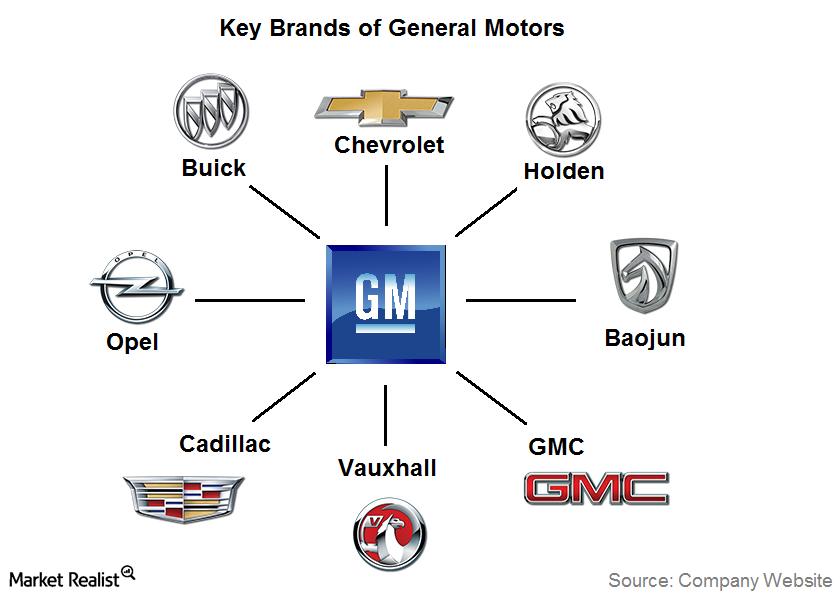GM Car Brands: A Comprehensive Guide to General Motors’ Automotive Empire cars.truckstrend.com
An Engaging Introduction
General Motors (GM) stands as one of the world’s most enduring and influential automotive manufacturers, a titan of industry with a legacy spanning over a century. More than just a car company, GM is a multifaceted empire built upon a strategic multi-brand approach, each marque designed to cater to distinct market segments, consumer preferences, and price points. From the rugged utility of its trucks to the refined luxury of its premium sedans and SUVs, GM’s diverse portfolio of car brands has shaped the global automotive landscape, offering a breadth of choice that few competitors can match. Understanding GM’s car brands isn’t just about knowing their names; it’s about appreciating the intricate strategy behind their creation, their individual identities, and their collective contribution to GM’s enduring success and future vision. This comprehensive guide will delve into the core of GM’s brand philosophy, exploring each key marque, its market position, and what it offers to drivers around the world.
GM Car Brands: A Comprehensive Guide to General Motors’ Automotive Empire
The Pillars of GM: A Brand Portfolio Overview
General Motors’ current strategy focuses on a leaner, more agile portfolio than its historical sprawling collection of marques. Today, the core of GM’s global operations is anchored by four primary brands: Chevrolet, Cadillac, GMC, and Buick. Each brand is meticulously crafted to appeal to specific demographics and fulfill particular automotive needs, allowing GM to effectively segment the market and maximize its reach without cannibalizing its own sales. This deliberate differentiation, while leveraging shared technological platforms and engineering expertise, is key to GM’s long-term profitability and competitive edge.
Deep Dive into Core GM Brands
Chevrolet: The Everyday American Icon
Chevrolet, often affectionately known as "Chevy," is the cornerstone of GM’s global sales volume and arguably its most recognizable brand. Founded in 1911, Chevrolet embodies the spirit of American ingenuity and accessibility, offering a vast array of vehicles designed for the everyday consumer.
- Market Position: Chevrolet targets the mainstream market, offering vehicles across nearly every segment: compact cars, sedans, SUVs, crossovers, pickup trucks, sports cars, and increasingly, electric vehicles. It’s known for providing value, reliability, and a broad appeal.
- Key Characteristics:

- Versatility: From the fuel-efficient Malibu and Equinox to the rugged Silverado pickup truck and the family-friendly Traverse.
- Performance Heritage: Home to iconic sports cars like the Corvette and Camaro, representing American muscle and engineering prowess.
- Innovation: Leading the charge in mass-market EVs with models like the Bolt EV/EUV and the upcoming Silverado EV and Blazer EV.
- Target Audience: A wide demographic, including young professionals, families, small businesses, and performance enthusiasts. Chevrolet aims to be "a car for every person and every purse," a philosophy that continues to drive its product development.

Cadillac: American Luxury Redefined
Cadillac, GM’s premier luxury brand, has been synonymous with American opulence and sophistication since its inception in 1902. While it faced challenges in the late 20th century, Cadillac has undergone a significant resurgence, repositioning itself as a formidable competitor to European and Asian luxury marques.
- Market Position: Cadillac competes in the premium and luxury segments, offering high-end sedans, performance vehicles, and a strong lineup of luxury SUVs. It emphasizes advanced technology, sophisticated design, and a refined driving experience.
- Key Characteristics:
- Art & Science Design Philosophy: Characterized by sharp lines, bold grilles, and distinctive lighting elements.
- Advanced Technology: Pioneers features like Super Cruise (hands-free driver-assistance system) and advanced infotainment systems.
- Performance Luxury: Models like the CT4-V and CT5-V Blackwing series offer world-class performance, while the Escalade defines the full-size luxury SUV segment.
- Target Audience: Affluent consumers seeking a blend of comfort, technology, performance, and a distinctive American luxury identity.

GMC: Professional Grade Power and Refinement
GMC, or General Motors Truck Company, has carved out a unique niche by focusing exclusively on trucks, SUVs, and vans, but with a distinct "professional grade" emphasis that differentiates it from Chevrolet’s more mass-market utility offerings.
- Market Position: GMC occupies a space between mainstream Chevrolet and premium Cadillac, offering upscale, more refined versions of GM’s trucks and SUVs. It targets buyers who need the capability of a truck but desire a more premium experience and features.
- Key Characteristics:
- "Professional Grade": Signifies durability, capability, and a higher level of refinement and features compared to their Chevrolet counterparts.
- Denali Sub-brand: The immensely popular Denali trim level elevates GMC vehicles with exclusive styling, premium materials, and advanced technology, blurring the lines with luxury vehicles.
- Focused Lineup: Sierra pickup trucks, Yukon and Terrain SUVs, and Canyon mid-size trucks.
- Target Audience: Contractors, business owners, families needing substantial towing/hauling capability, and individuals who appreciate a rugged yet refined vehicle with premium features.
Buick: Accessible Luxury and Refined Comfort
Buick, with a history dating back to 1903, traditionally occupied a "near-luxury" position within the GM hierarchy, bridging the gap between mainstream and full luxury. While its presence has diminished in North America, it remains a powerhouse in the Chinese market, where it is highly revered.
- Market Position: Buick aims for a refined, comfortable, and quiet driving experience, offering a blend of accessible luxury and elegant design. In North America, its lineup primarily consists of crossovers and SUVs.
- Key Characteristics:
- QuietTuning™: A suite of technologies designed to minimize noise, vibration, and harshness for a serene cabin experience.
- Comfort-Oriented: Focus on plush interiors, smooth rides, and user-friendly technology rather than aggressive performance.
- Strong Global Presence: Particularly dominant in China, where it’s perceived as a premium brand with a strong heritage.
- Target Audience: Buyers seeking a comfortable, quiet, and elegantly styled vehicle with premium features without the top-tier luxury price tag. Often appeals to empty nesters, smaller families, and those prioritizing refinement over sportiness.
The Strategic Importance of a Multi-Brand Approach
GM’s commitment to a multi-brand strategy is not merely a historical artifact; it’s a shrewd business decision with several compelling advantages:
- Market Segmentation: Each brand can be precisely tailored to a specific segment of the market, addressing diverse needs, budgets, and aspirations. This prevents direct internal competition and maximizes market penetration.
- Brand Loyalty and Distinct Identities: Strong, independent brand identities foster unique emotional connections with consumers, cultivating loyalty that transcends individual models. A Cadillac buyer is different from a Chevy truck buyer, and GM caters to both distinctly.
- Leveraging Shared Platforms and Technologies: While brands maintain unique identities, GM efficiently shares underlying vehicle platforms, powertrains, and technological innovations (like the Ultium EV platform or infotainment systems) across its brands. This economies of scale approach significantly reduces development and manufacturing costs.
- Adapting to Global Markets: The varying perceptions and demands of different global markets are better met with a multi-brand strategy. For example, Buick’s immense success in China highlights the flexibility of this approach.
- Risk Diversification: If one brand or segment faces challenges, the strength of other brands can help stabilize overall performance.
Navigating GM’s Brand Landscape: Tips for Consumers
Choosing a vehicle from GM’s diverse portfolio can be an enjoyable process if you understand the distinctions between its brands. Here’s how to navigate the landscape:
- Define Your Needs and Budget:
- Value and Variety: If you need a reliable daily driver, a family SUV, or a work truck at a competitive price, Chevrolet is your primary stop.
- Luxury and Technology: For cutting-edge features, premium comfort, and a strong brand statement, Cadillac is the clear choice.
- Premium Utility and Capability: If you need a robust truck or SUV with enhanced features and a more upscale feel than a standard model, GMC fits the bill.
- Accessible Luxury and Comfort: For a quiet, smooth ride with elegant styling and thoughtful features without the full luxury price, consider Buick.
- Consider Your Lifestyle: Are you an urban commuter, an off-road enthusiast, a large family needing space, or a business owner hauling equipment? Each brand has models optimized for different lifestyles.
- Prioritize Features: Are advanced driver-assistance systems (ADAS), premium audio, specific interior materials, or towing capacity most important to you? Research which brand and specific model offer the features you prioritize.
- Test Drive Multiple Options: Even within the same brand, models vary. Test driving different vehicles across GM’s brands will give you a real feel for their distinct personalities and help you make an informed decision.
- Understand Commonalities: Be aware that many GM vehicles share common components, infotainment systems (like MyLink or CUE), and services (like OnStar). This can simplify ownership and maintenance, but it also means some features are not brand-exclusive.
Challenges and Future Directions for GM Brands
While GM’s multi-brand strategy has proven robust, it faces ongoing challenges and significant shifts in the automotive industry:
- Intense Competition: GM brands compete not only with each other in some overlapping segments but also with a global array of manufacturers, including established rivals and new entrants, particularly in the EV space.
- The Shift to Electric Vehicles (EVs): GM is making an aggressive pivot towards an all-electric future, powered by its modular Ultium battery platform. This transition requires re-establishing brand identities in the EV era and convincing consumers to embrace electric versions of their favorite models (e.g., electric Silverado, Blazer EV, Cadillac LYRIQ).
- Autonomous Driving Technology: The development and deployment of advanced autonomous driving systems (like Super Cruise) are crucial for future competitiveness, requiring significant investment and careful brand integration.
- Maintaining Brand Distinctiveness: As platforms and technologies become increasingly shared, the challenge lies in maintaining unique brand identities and preventing "badge engineering" (where only the badge differentiates models). Design, specific features, and brand experience become paramount.
- Historical Brand Rationalization: GM has historically phased out less profitable or redundant brands (e.g., Pontiac, Oldsmobile, Saturn, Hummer, Saab). This ongoing rationalization ensures a focused and healthy portfolio. The future may see further refinements to optimize efficiency and market relevance.
Practical Advice and Actionable Insights
For consumers, GM’s multi-brand approach offers an unparalleled opportunity to find a vehicle perfectly suited to their needs. Instead of being confined to a single brand’s philosophy, you can explore distinct offerings under one corporate umbrella. For instance, if you need a truck, you have the choice between the value-oriented, broad appeal of a Chevrolet Silverado or the more refined, premium features of a GMC Sierra. If luxury is your aim, you can opt for the technology-forward Cadillac or the comfortable, accessible luxury of a Buick. This strategic diversity is a significant advantage, empowering buyers with more tailored options and a wider spectrum of price points and features.
GM Car Brands: Representative Starting MSRP Ranges (Approximate)
Please note that these are representative starting MSRP ranges for brand lineups and can vary significantly based on specific models, trims, features, and market conditions. These figures are intended to give a general idea of each brand’s market positioning.
| GM Brand | Primary Market Segment | Representative Starting MSRP Range (USD) | Key Offerings (Examples) |
|---|---|---|---|
| Chevrolet | Mainstream, Value, Performance | $22,000 – $75,000+ | Malibu, Equinox, Silverado, Tahoe, Colorado, Corvette, Bolt EV |
| Buick | Accessible Luxury, Comfort | $25,000 – $45,000+ | Encore GX, Envision, Enclave |
| GMC | Professional Grade, Premium Utility | $30,000 – $90,000+ | Canyon, Sierra, Terrain, Acadia, Yukon (incl. Denali) |
| Cadillac | Luxury, Performance, Technology | $40,000 – $120,000+ | XT4, XT5, XT6, CT4, CT5, Escalade, LYRIQ |
Note: Prices are subject to change and do not include destination charges, options, or taxes. Performance and specialty models (e.g., Corvette Z06, Cadillac Blackwing models) can exceed the higher end of these ranges.
Frequently Asked Questions (FAQ)
Q1: What are the main car brands owned by GM today?
A1: The main car brands currently owned and actively marketed by General Motors are Chevrolet, Cadillac, GMC, and Buick.
Q2: Did GM own other car brands in the past?
A2: Yes, GM historically owned many other brands, some of which were discontinued or sold. Notable examples include Pontiac, Oldsmobile, Saturn, Hummer, and Saab (sold).
Q3: Why does GM have so many different car brands?
A3: GM uses a multi-brand strategy to segment the market, allowing them to appeal to diverse customer needs, budgets, and preferences without internal competition. Each brand has a distinct identity and target audience.
Q4: Do GM car brands share parts or platforms?
A4: Yes, one of the key benefits of a multi-brand strategy for a large automaker like GM is the ability to share common vehicle platforms, powertrains, and technologies across different brands. This creates economies of scale, reducing development and manufacturing costs.
Q5: Is GMC just a fancy Chevrolet?
A5: While GMC vehicles often share platforms and components with Chevrolet counterparts (e.g., Silverado and Sierra trucks), GMC is positioned as a "Professional Grade" brand offering more upscale features, premium materials, and distinct styling. The Denali sub-brand within GMC further elevates this premium experience.
Q6: Which GM brand is focused on electric vehicles?
A6: While all GM brands are integrating EVs into their lineups, Cadillac is leading GM’s luxury EV push with models like the LYRIQ, and Chevrolet is focused on bringing mass-market EVs like the Bolt EV/EUV and upcoming Silverado EV and Blazer EV to consumers. GM’s Ultium battery platform underpins this transition across all brands.
Concluding Summary
General Motors’ enduring success is inextricably linked to its strategic management of its diverse car brands. By meticulously crafting distinct identities for Chevrolet, Cadillac, GMC, and Buick, GM effectively addresses a vast spectrum of consumer demands, from value-driven practicality to opulent luxury and robust utility. This multi-brand approach allows GM to leverage shared technologies while maintaining unique market positions, fostering brand loyalty, and adapting to the nuances of global markets. As the automotive industry accelerates towards an electrified and autonomous future, GM’s core brands are at the forefront of this transformation, ensuring that this American automotive giant remains a formidable force, ready to redefine mobility for generations to come. Understanding these brands is key to appreciating GM’s past, present, and its visionary path forward.

